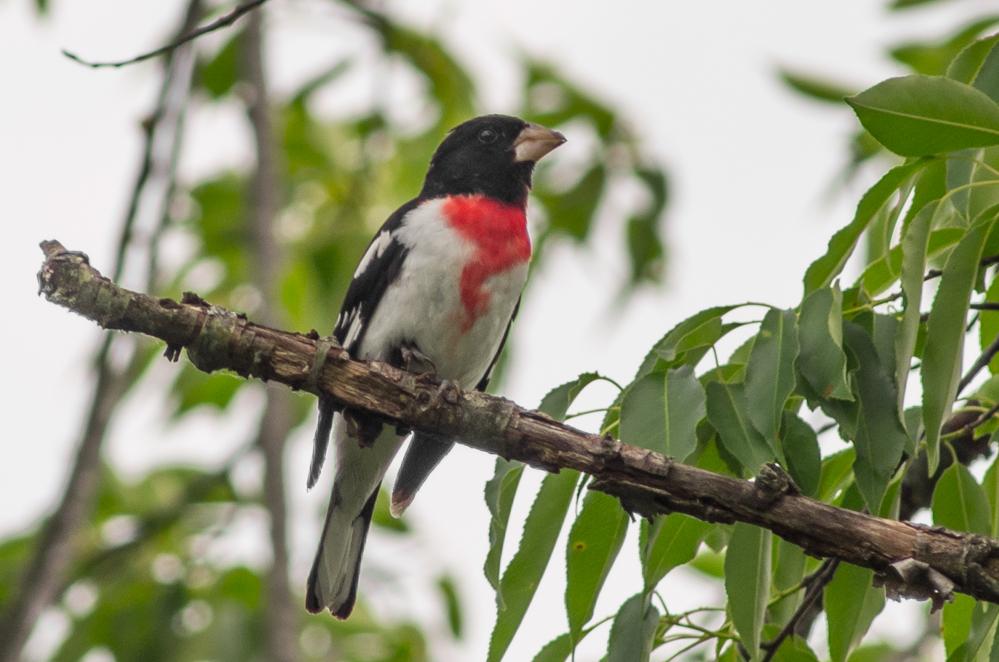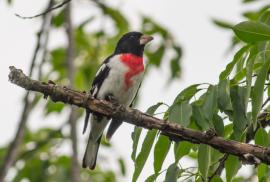Guide to Boreal Birds
Overview
This handsome grosbeak is one of the most conspicuous birds before the foliage comes into full leaf in early May. It is beneficial to farmers, consuming many potato beetles and larvae as well as weed seeds, wild fruits, and buds.
Description
8" (20 cm). Starling-sized. Heavy pinkish-white bill. Male black and white with conspicuous rose-red patch on breast and underwings. Female white above and below with heavy brown streaking; prominent white eyebrow; yellow wing linings.
Voice
Its distinctive call note is a sharp, penetrating, metallic eek-eek. Song is like that of an American Robin, but softer and more melodious.
Nesting
4 or 5 purple-spotted whitish eggs in a loosely made nest of twigs, grass, and plant fibers set in a low branch of a tree.
Habitat
Moist woodlands adjacent to open fields with tall shrubs; also old and overgrown orchards.
Range/Migration
It is hard to miss the arrival of Rose-breasted Grosbeaks in the spring, as the males sing their bright, cheerful songs throughout the day while they establish their territorial boundaries. Mature males (second year and older) arrive first, about three days ahead of the females. First-year males are last to arrive; these birds, which look more or less like females, also arrive in a predictable order: "bright" individuals come first, the dullest birds (those that look most like juveniles) last. (It is believed that the dull birds are those that experienced a less extensive molt, possibly due to poorer nutrition on the wintering grounds.) Females will sometimes mate with first-year males, and when they do, they usually choose the bright individuals. This species has been arriving earlier each spring for about the last 20 years, possibly as a result of climatic change due to greenhouse gases in the atmosphere.
Breeds from northeastern British Columbia, southern Manitoba, and Nova Scotia south to southern Alberta, central North Dakota, central Oklahoma, and New Jersey, and in mountains as far south as northern Georgia. Appears regularly on West Coast. Winters from central Mexico through Central America and into northern South America.



